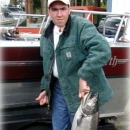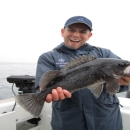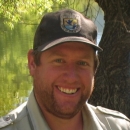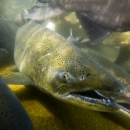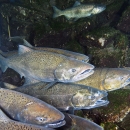The John Day/The Dalles Dam Mitigation (JDTD) program provides mitigation for the escapement of 30,000 adult fall Chinook salmon (Oncorhynchus tshawytscha) due to the loss of spawning habitat and production caused by construction of the John Day and The Dalles Dams in the Columbia River. The program is funded by the U.S. Army Corps of Engineers (USACE) and operates with a total adult production (TAP) goal of 107,000 adults to replace the loss of 30,000 spawning adults (which include all adults harvested in saltwater and freshwater, returns to the hatchery, strays to other facilities, and any adults observed on the spawning grounds). Working towards this TAP goal, juvenile fall Chinook are reared and released from numerous state, tribal, and federally-operated hatcheries. Spring Creek and Little White Salmon National Fish Hatcheries (NFHs) annually contribute to the TAP goal of the JDTD program through the coordinated rearing and release of juvenile tule and upriver bright fall Chinook. In the past ten years, Spring Creek NFH has annually released a mean of 10.7 million juvenile tules into the Columbia River. Over the past 10 brood years, the program has contributed a mean of 87,322 adult tules (including 66,120 for harvest) annually to the JDTD program TAP goal. Since 2014, Little White Salmon NFH has annually released a mean of 4.4 M juvenile upriver brights into the Little White Salmon River. Over the past 10 brood years, the program at Little White Salmon NFH contributed a mean of 34,133 adult upriver brights (including 17,594 for harvest) annually to the JDTD program TAP goal. Congressional mandated mass marking of juveniles prior to release from both Spring Creek and Little White Salmon NFHs has been conducted to allow selective harvest of hatchery-reared individuals and protection of wild fish stocks. Additionally, coded-wire and PIT tagging of juveniles at both facilities has provided knowledge on timing of juvenile migration, downstream survival, number of adult returns to the facilities by brood year, smolt-to-adult survival rates, and tracking of fish straying. Additional monitoring and evaluation projects for both facilities are ongoing or currently being developed to determine the success and longevity of the programs in meeting their mitigation goals as well as ESA compliance through Biological Opinions as part of the JDTD program.
Publication date
Type of document
Annual Report
Facility
Media Usage Rights/License
Public Domain
Program
Species
FWS Focus
FWS and DOI Region(s)

